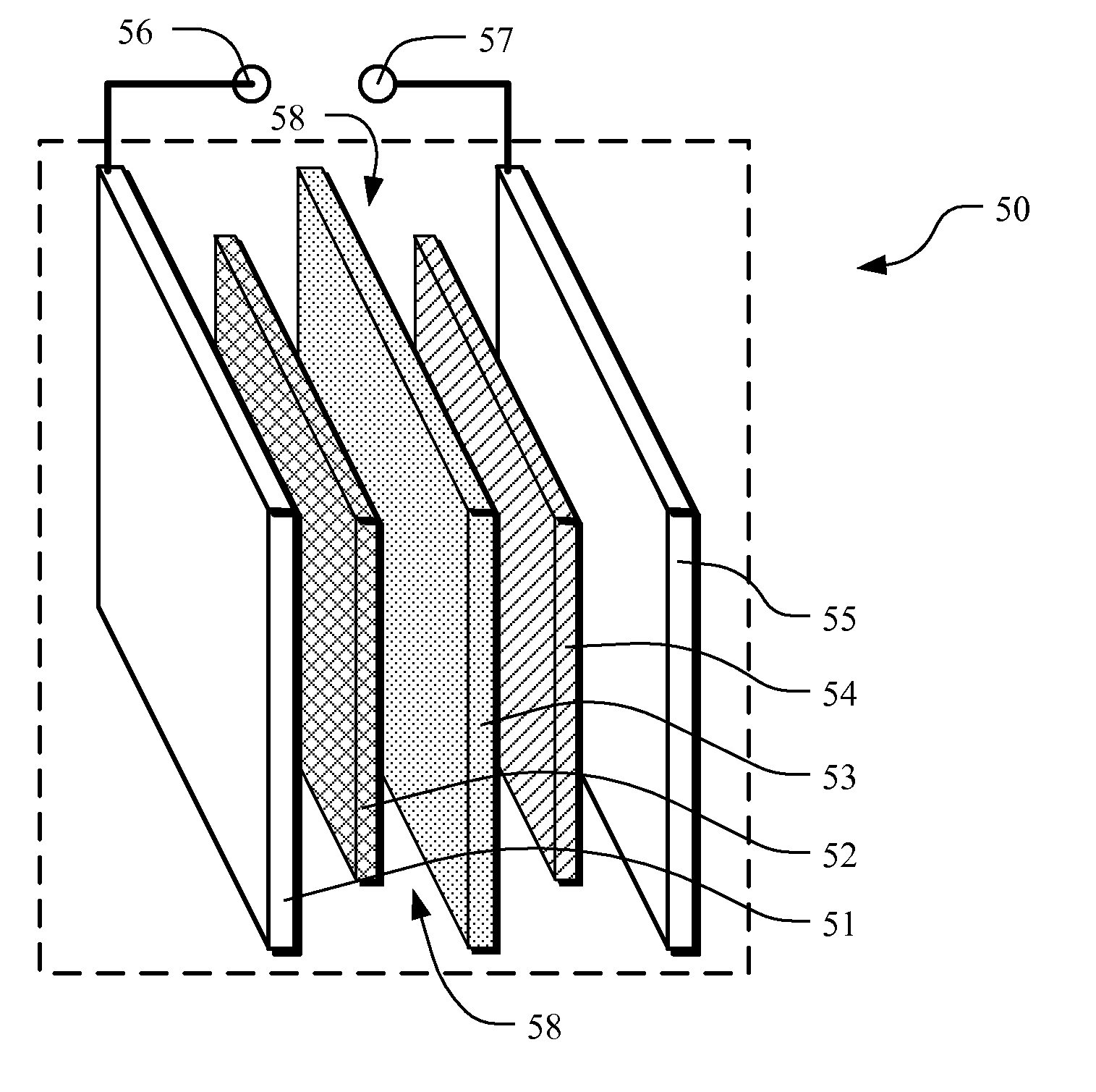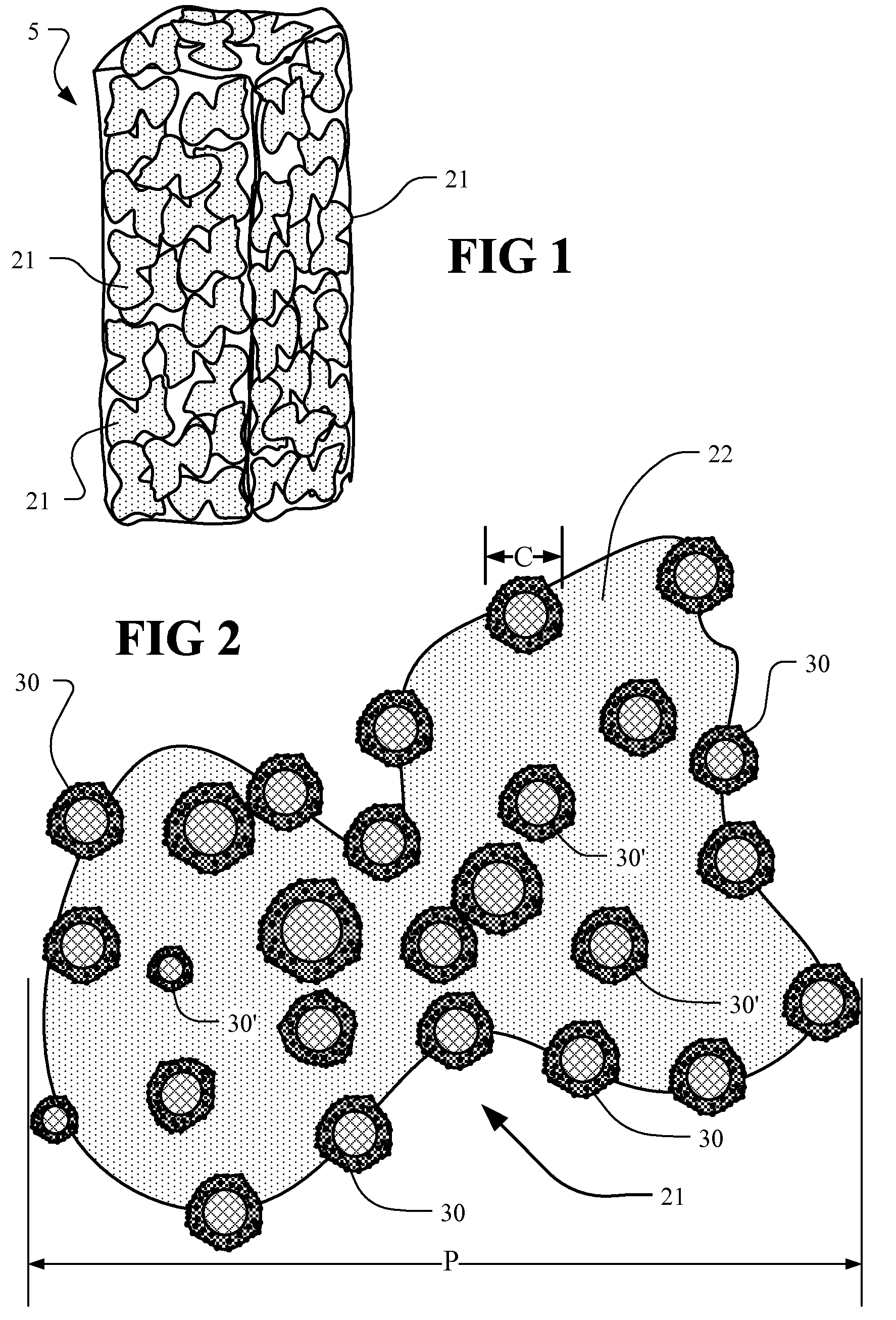Electroactive material for charge transport
a charge transport and electrochemical technology, applied in the field of electrochemical devices, can solve the problems of not meeting the size requirements of consumer electronics, natural or incidental nanomaterials tend to be highly irregular in size and composition, and are manufactured using rigorous processing steps, etc., to achieve no noticeable loss of performance, prolong the total life, and improve the effect of performan
- Summary
- Abstract
- Description
- Claims
- Application Information
AI Technical Summary
Benefits of technology
Problems solved by technology
Method used
Image
Examples
Embodiment Construction
[0055]The char obtained from the pyrolysis of tires is an inexpensive source of nanomaterials that, with further control and added processing, are potentially useful in many fields including Photo Catalysts, Contact Catalysts, Capacitors, Batteries, Sorbents (Adsorbents and Absorbents) and Photo Voltaic Materials. The ability to use nanomaterials derived from char in useful applications is dependent on controlling the parameters of the tire pyrolysis process and the processing of char for particular applications.
[0056]One particular application of processed char is for electrodes that are used in batteries, electrochemical capacitors and other devices. In general, electrodes undergo reactions that take place in a solution at the interface of an electron conductor (electrode) and an ionic conductor (electrolyte). Electrons transfer between the electrode and the electrolyte or species in solution. Typical electrolytes include aqueous, organic, inorganic and polymeric.
[0057]The electro...
PUM
| Property | Measurement | Unit |
|---|---|---|
| diameter | aaaaa | aaaaa |
| thickness | aaaaa | aaaaa |
| diameter | aaaaa | aaaaa |
Abstract
Description
Claims
Application Information
 Login to View More
Login to View More - R&D
- Intellectual Property
- Life Sciences
- Materials
- Tech Scout
- Unparalleled Data Quality
- Higher Quality Content
- 60% Fewer Hallucinations
Browse by: Latest US Patents, China's latest patents, Technical Efficacy Thesaurus, Application Domain, Technology Topic, Popular Technical Reports.
© 2025 PatSnap. All rights reserved.Legal|Privacy policy|Modern Slavery Act Transparency Statement|Sitemap|About US| Contact US: help@patsnap.com



